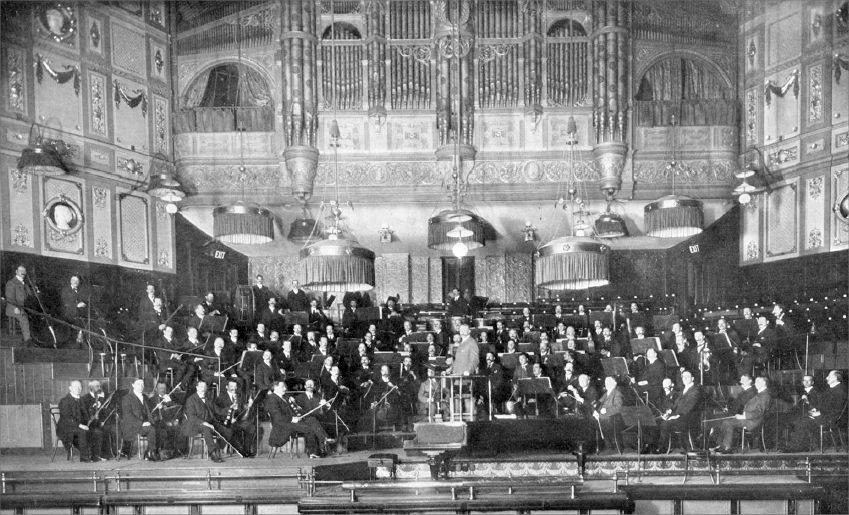 Gustav Mahler (1860 – 1911) was an Austrian Jewish composer and conductor who wrote 10 symphonies and various songs with orchestra, drawing together the many threads of Romanticism. His large-scale dramatic works sail through notable contrasts and mood changes including joy and hope. It is said Mahler described his work as being “about life.” Mahler, pictured here in 1907 by Moritz Nähr at the Vienna State Opera, was Director of Music there for 10 years. He conducted 645 performances, brought new life to the opera house and cleared its debts.
Gustav Mahler (1860 – 1911) was an Austrian Jewish composer and conductor who wrote 10 symphonies and various songs with orchestra, drawing together the many threads of Romanticism. His large-scale dramatic works sail through notable contrasts and mood changes including joy and hope. It is said Mahler described his work as being “about life.” Mahler, pictured here in 1907 by Moritz Nähr at the Vienna State Opera, was Director of Music there for 10 years. He conducted 645 performances, brought new life to the opera house and cleared its debts.
Gustav Mahler’s 4th Symphony embraces his musical vision of a child’s journey from earth to heaven. The apparent simple nature of the first movement becomes more layered, patterned and delightful as the child moves through life experiencing simple things. The sparkle of sleigh bells, birdsong and nature themes reappear throughout the piece. The symphony is popularly entitled Ode to Heavenly Joy because of its finale. Unlike his other symphonies, humor permeates the piece, beginning to end.
The second movement begins, in Mahler’s own words, when: “Freund Hein strikes up the dance for us; he strokes the fiddle most strangely and plays us up to heaven.” Freund Hein (friend death) is an allegorical figure derived from German folklore; ergo the fiddle sound is scratchy and shrill. When Freund Hein is elsewhere, we delight in Mahler’s enchanting and other-worldly catalogue of musical inventions in each movement.
In the leisurely third movement many romantic and charming melodies traverse the child’s passage from earthly portals right up to the heavenly gates. Mahler said this movement reminded him of his mother’s smile. Near the end, the orchestra takes a breath and then explodes into a wondrous noise as if the force of their music blows open the gates of heaven.
In the brief fourth movement, once the gates open, the dominating melody reflects a child relating their experience of the divine. Its simplicity is disarming as it embraces this complex experience. It ends with a spopranic performance of The Heavenly Life, a German folksong. The song is a child’s naïve concept of a Christian heaven. It is taken from one of Mahler’s favorite sources, an anthology of German folk poetry entitled The Youth’s Magic Horn (Des Knaben Wunderhorn, 1805-08). No one had ever ended a symphony in quite this way. We should not be surprised as all of Mahler’s works are said to embody a spiritual conflict that reaches a conclusive resolution. We can’t help but hum these melodies, rich in meaning, as we leave the performance.
March 26 7:30pm
Orinda Library Auditorium
March 27 3:00pm
Bankhead Theater, Livermore



